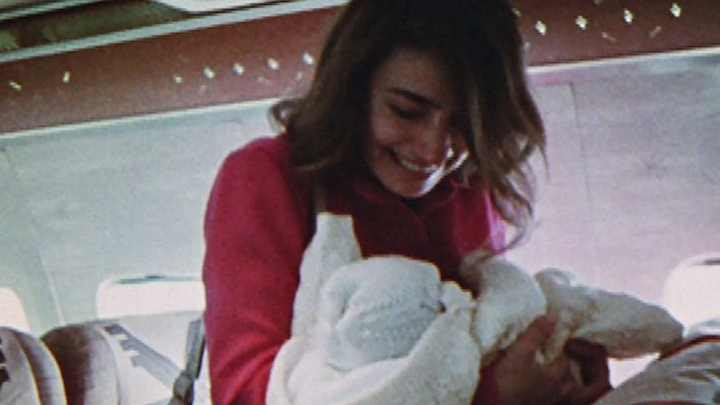Motherhood didn’t look all that appealing to director Joyce Chopra in 1963, when she was sent to Aberdeen, South Dakota, on one of her first documentary assignments: capturing footage of the 2-week-old Fischer quintuplets for The Saturday Evening Post.
“It was clear that Mrs. Fischer was not overly pleased to see us,” Chopra writes in her new memoir Lady Director: Adventures in Hollywood, Television and Beyond, describing the media circus surrounding the mother of 10, who had doubled the size of her family in a single hospital trip. In Chopra’s finished film, A Happy Mother’s Day, Mary Ann Fischer is constantly dodging the camera.
But just under a decade later, Chopra welcomed her own daughter into the world—and invited all the world to see. The birth was filmed and included in her groundbreaking 1972 documentary short Joyce at 34, which aired on PBS. The 40-second sequence is believed to be the first live birth shown on television.
Swept Away
The inspiration for Joyce at 34 struck Chopra when she was already eight months pregnant with her first and only child. Her friend had suggested she make a documentary about her changing relationship with her mother as she entered parenthood, but Chopra decided to focus on her anxieties about balancing motherhood and her career instead.

“I was so afraid if I stopped working I wouldn’t be Joyce anymore,” Chopra told The Washington Post in 1986. “It was a time when I was much more desperate about my own identity and my own career. I had this feeling I would be swept away into motherhood and lose myself completely.”
With $10,000 in funding from New York PBS affiliate WNET, Chopra teamed up with filmmaker Claudia Weill to execute her autobiographical short, which opens with a brief scene of a heavily pregnant Chopra before cutting to her in the throes of childbirth.
The plan was for Weill to film the birth when the time came, but “just our luck,” Chopra writes in Lady Director, Weill was out of town when the moment struck. A standby crew was called into the hospital room around 2 a.m. “In spite of the Lamaze breathing techniques, it hurt like hell and helped me forget that a camera was pointing straight between my legs,” Chopra writes. That camera spared no details, capturing a quietly panting Chopra in labor, and the bloody, slimy baby that doctors coaxed out of her body.
Joyce at 34 then follows the first 14 months of baby Sarah’s life. In between her milestones, the camera captures Chopra and her husband, the writer Tom Cole, struggling to integrate child care into their busy lives. One memorable scene shifts the focus to Chopra’s mother and her friends, as they discuss their guilt and struggles as working moms.
“Neither Propaganda Nor Putdown”
When the short debuted in 1974, Gloria Steinem called it “one of the rare documentaries that is neither propaganda nor putdown: a film that loves both the people it portrays and the truth.” A less gracious viewer in Massachusetts complained, “I thought I was going to see a film about James Joyce and instead it’s some ugly dame!”

In addition to airing on PBS and screening at select film festivals, the short circulated through the feminist collective New Day Films, whose members distributed their own movies through the mail to schools, libraries, and other interested customers.
As for the baby at the center of the short, she got something out of it, too: a killer college admission essay.
“I was born on film,” Sarah Cole, quoted in her mother’s memoir, wrote. “I have been born a dozen times on public television, once at a cross-cultural film festival in the Soviet Union, every year (as far as I know) at some or other university in the U.S. A roll of celluloid, from which I could be born at any moment, is reposing in the vault at the Museum of Modern Art.”
